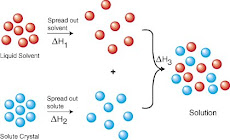Cleanlink News 7/10/2013
Study Reveals Hand Sanitizer Efficacy
With some alcohol-based hand rubs a volume of 1.1 mL is recommended per application. But researchers say it is unknown whether such a small volume is sufficient to cover both hands or whether it fulfills current efficacy standards.
To address this question of efficacy, a study was done to determine hand coverage of three hand rubs — one gel based on 70 percent ethanol, one gel based on 85 percent ethanol, and one foam based on 70 percent ethanol. Each was applied with various volumes — all products: 1.1 mL, 2 mL, 2.4 mL, 1 push and 2 pushes; only foam product: 1.1 mL foam, 2 mL foam, 2.4 mL foam.
Fifteen subjects applied each product, which were supplemented with a fluorescent dye, after which researchers used a UV light to determine the quality of coverage. The hands of 12 subjects per experiment were artificially contaminated with Serratia marcescens and the products applied as recommended (1.1 mL for the products based on 70 percent v/v ethanol; 2 mL for the product based on 85 percent w/w ethanol).
Researchers presented their findings in a presentation titled "Lesser and lesser — the impact of small volumes in hand disinfection on quality of hand coverage and antimicrobial efficacy" at the International Conference on Prevention and Infection Control (ICPIC 2013). The results were:
"A volume < 2 mL yielded a high rate of incomplete coverage (76% - 87%), a volume ≥ 2 mL revealed better results (18% - 40%). There was a significant difference between the five volumes used with all hand rubs (p < 0.001; analysis of variance) but not between the three hand rubs themselves (p = 0.442). Application of 1.1 mL of the hand rubs based on 70% ethanol yielded a log10-reduction of 1.85 or 1.60 log10 (ASTM E 1174-06) and failed the US FDA efficacy requirement. Application of 2 mL of the hand rub based on 85% ethanol reduced the contamination by 2.06 log10 (ASTM E 1174-06) and fulfilled the US FDA efficacy requirement. Similar results were obtained according to ASTM E 2755-10."
In conclusion, the researches found that hand rubs based on 70 percent ethanol and recommended with a volume of 1.1 mL per application are not suitable to ensure complete coverage of both hands and do not fulfill the current ASTM efficacy standard requirements.
To address this question of efficacy, a study was done to determine hand coverage of three hand rubs — one gel based on 70 percent ethanol, one gel based on 85 percent ethanol, and one foam based on 70 percent ethanol. Each was applied with various volumes — all products: 1.1 mL, 2 mL, 2.4 mL, 1 push and 2 pushes; only foam product: 1.1 mL foam, 2 mL foam, 2.4 mL foam.
Fifteen subjects applied each product, which were supplemented with a fluorescent dye, after which researchers used a UV light to determine the quality of coverage. The hands of 12 subjects per experiment were artificially contaminated with Serratia marcescens and the products applied as recommended (1.1 mL for the products based on 70 percent v/v ethanol; 2 mL for the product based on 85 percent w/w ethanol).
Researchers presented their findings in a presentation titled "Lesser and lesser — the impact of small volumes in hand disinfection on quality of hand coverage and antimicrobial efficacy" at the International Conference on Prevention and Infection Control (ICPIC 2013). The results were:
"A volume < 2 mL yielded a high rate of incomplete coverage (76% - 87%), a volume ≥ 2 mL revealed better results (18% - 40%). There was a significant difference between the five volumes used with all hand rubs (p < 0.001; analysis of variance) but not between the three hand rubs themselves (p = 0.442). Application of 1.1 mL of the hand rubs based on 70% ethanol yielded a log10-reduction of 1.85 or 1.60 log10 (ASTM E 1174-06) and failed the US FDA efficacy requirement. Application of 2 mL of the hand rub based on 85% ethanol reduced the contamination by 2.06 log10 (ASTM E 1174-06) and fulfilled the US FDA efficacy requirement. Similar results were obtained according to ASTM E 2755-10."
In conclusion, the researches found that hand rubs based on 70 percent ethanol and recommended with a volume of 1.1 mL per application are not suitable to ensure complete coverage of both hands and do not fulfill the current ASTM efficacy standard requirements.










































